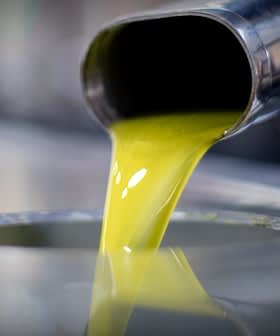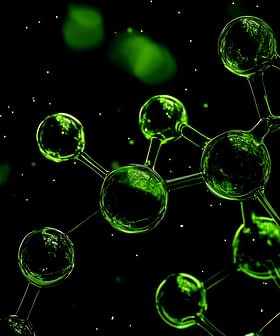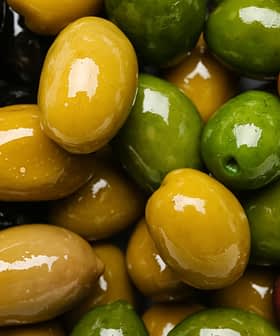New Study Suggests Olive Oil May Reduce Breast Cancer Risk
New research from Italy suggests a potential link between increased olive oil consumption and a lower risk of developing breast cancer, particularly estrogen-negative and progesterone-negative tumors. The study combined data from over 11,000 Italian women with a review of previous research to explore the impact of olive oil on breast cancer risk, although further investigation is needed to confirm these findings and clarify the role of olive oil in preventing breast cancer.
New research conducted in Italy introduces data showing a potential correlation between increased olive oil consumption and a reduced risk of developing breast cancer.
The study, published by the European Journal of Cancer, combines two research approaches. First, researchers analyzed data from more than 11,000 Italian women enrolled in the long-running Moli-sani study. Over a 13-year follow-up, they tracked dietary habits and breast cancer incidence.
To strengthen their findings, the team added a systematic review of prior research. They examined 13 observational studies and one randomized clinical trial to assess the consistency of the link between olive oil and breast cancer risk.
What we observed is a very linear association: the more olive oil people consumed, the lower the (breast cancer) risk. With each additional tablespoon, set at ten grams, we saw a proportional risk reduction.
By merging original epidemiological data with a comprehensive literature review, the researchers aimed to shed new light on the potential role of olive oil in reducing breast cancer risk.
While the association with overall breast cancer risk remained inconclusive, the results suggested a possible inverse relationship between olive oil intake and the risk of developing relatively rare estrogen-negative and progesterone-negative tumors, which lack estrogen and progesterone receptors.
Estrogen and progesterone receptors are proteins found in or on some breast cancer cells that bind to these hormones.
See Also:Health News“Risk factors may vary depending on the type of tumor, particularly based on the presence or absence of estrogen receptors,” Marialaura Bonaccio, a researcher at the Neuromed Mediterranean Neurologic Institute and co-author of the study, told Olive Oil Times.
“In estrogen-positive tumors, the effect of hormones is very strong and may therefore overshadow the influence of diet,” she added. “In contrast, in estrogen-negative tumors, diet and other non-hormonal factors may play a more significant and more easily recognizable role.”
“Some components of olive oil, such as hydroxytyrosol and oleuropein, appear to interact specifically with mechanisms related to estrogen receptors,” Bonaccio added.
This could help explain why olive oil consumption may have different effects depending on the type of breast cancer, specifically whether these receptors are present or not.
“We cannot speak of a prevention effect [due to olive oil intake], as we do not have solid, incontrovertible data,” Bonaccio said. “On top of that, we’re talking about results from observational studies, a type of research that comes with well-known limitations.”
In observational studies, researchers track what people eat and monitor health outcomes over time.
These studies have significant limitations, such as confounding: people who eat healthier often lead generally healthier lives, making it difficult to isolate the effect of diet alone.
Recall bias is another concern, as participants may misreport their food intake. Reverse causation is also possible; for example, individuals might change their diet because they are already ill.
Since observational studies can only show associations, not cause-and-effect relationships, they must be interpreted with caution and a thorough understanding of their context.
To address these concerns, the researchers adjusted for various factors.
“As shown in the paper, those who consume more olive oil also tend to follow the Mediterranean diet more closely. We accounted for that in our models to help isolate the effect of olive oil per se,” Bonaccio said.
The researchers could not distinguish between different grades of olive oil, such as extra virgin, because the Moli-sani cohort data does not make that distinction.
“That’s why our paper refers generically to ‘olive oil’, even though we know from other research that effects can differ between extra virgin and other types,” Bonaccio noted.
Given that the Moli-sani study was conducted in a southern Italian region with a strong tradition of adhering to the Mediterranean diet and high-quality olive oil production, it is likely that the results primarily reflect the impact of extra-virgin olive oil.
“We can reasonably believe that, as it’s a rooted cultural element, but we don’t have the data,” Bonaccio cautioned.
The cohort questionnaire asked participants whether they used olive oil and how frequently.
One area the researchers could explore was the quantity of olive oil intake associated with potential health impacts.
“What we observed is a very linear association: the more olive oil people consumed, the lower the risk. With each additional tablespoon, set at ten grams, we saw a proportional risk reduction,” Bonaccio said.
Specifically, the data suggest that consuming more than three tablespoons per day is associated with a 30 percent lower risk of overall breast cancer.
However, this result is not considered statistically significant. The confidence interval for the risk estimate included 1.0, meaning the observed reduction could be due to chance. This limits the strength of the finding in scientific terms.
Nonetheless, the trend contributes to a growing body of evidence suggesting a potential protective role of olive oil, particularly against more challenging-to-treat cancers.
“There seems to be a kind of threshold at three tablespoons. When we model it continuously, the relationship stays linear: more oil, lower risk,” Bonaccio said.
“Calories should be considered; one tablespoon of olive oil contains about 100 calories, but not all calories are equal. One hundred calories from olive oil are not comparable to 100 calories from sugar-loaded sodas,” she added.
Bonaccio also pointed out that other studies, such as Spain’s PREDIMED, support these findings.
“In that study, four tablespoons were used as the threshold for high Mediterranean diet adherence, though their tablespoons are 14 grams each. So, in short: it’s preferable to use olive oil as the main dietary fat,” she said.
According to Bonaccio, the current research does not yet provide robust, specific conclusions regarding the relationship between breast cancer and olive oil.
“Adding to that, estrogen- and progesterone-negative tumors are rare, so the numbers available for analysis are limited,” she said. “What we have are indications, data that point in a specific direction, but further investigation is needed.
Bonaccio explained that many breast cancer studies do not include information on receptor status.
“So even the studies we reviewed often only provide data on overall cancer or menopausal status, which are more commonly reported, but not always include receptor information,” she added.
According to the researcher, the following steps should include refining epidemiological tools, such as improving questionnaires and data collection methods.
“In the Moli-sani study, we do have data on how people use olive oil, whether raw, for frying, or for sautéing, to name a few. Including that kind of detail could enrich the analysis,” Bonaccio explained.
“There’s still a lot of work to do. That said, with all due caution, it is interesting to highlight this association between olive oil consumption and reduced breast cancer risk, and hopefully encourage other researchers to analyze their data so we can build on these findings,” she concluded.







